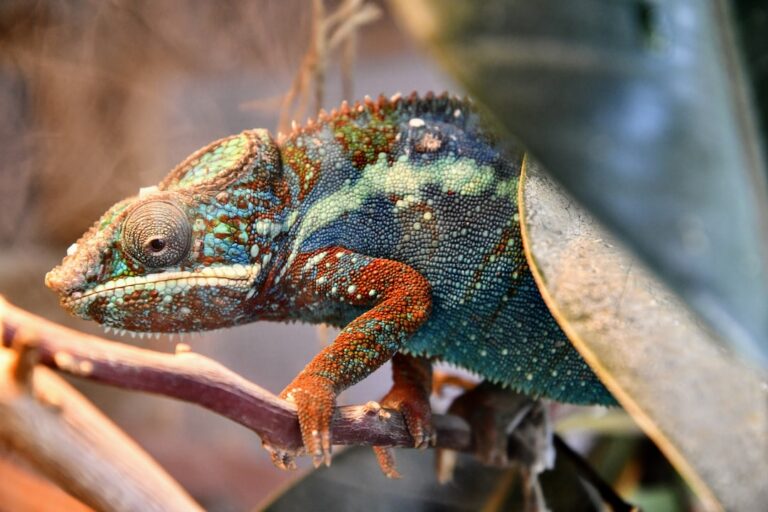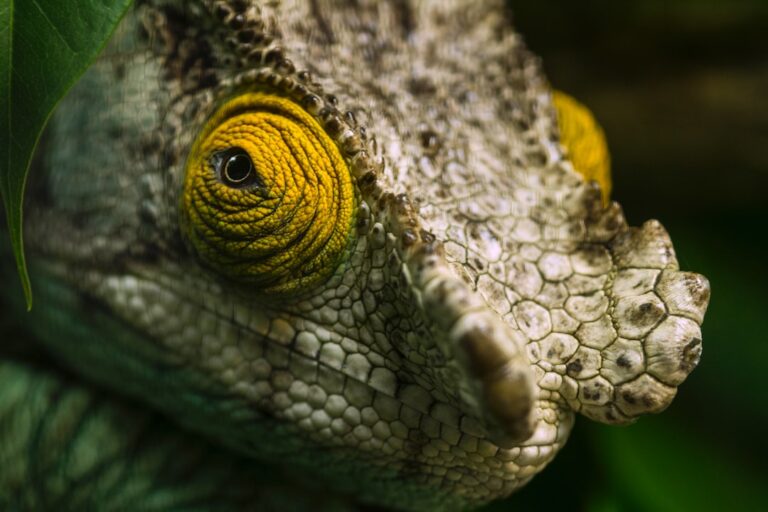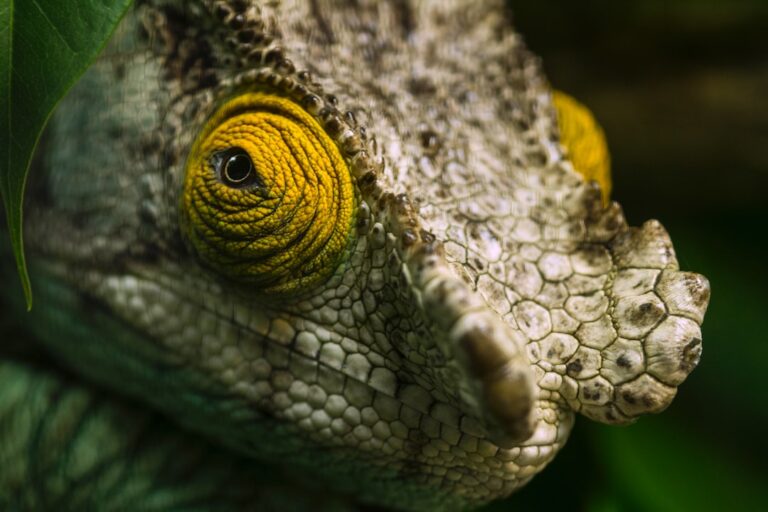Are Chameleons Deep Sleepers?
Chameleons are fascinating creatures known for their ability to change color and blend into their surroundings. They are reptiles that belong to the family Chamaeleonidae and are native to Africa, Madagascar, and parts of southern Europe and Asia. Chameleons have unique characteristics that set them apart from other reptiles, such as their independently moving eyes, long tongues, and prehensile tails.
Understanding the sleeping habits of chameleons is crucial for their health and well-being. Sleep is an essential physiological process that allows animals to rest, repair their bodies, and conserve energy. It is during sleep that the body undergoes various restorative processes, including tissue repair, memory consolidation, and hormone regulation. By understanding how chameleons sleep, we can ensure that they have the proper conditions to rest and thrive.
Table of Contents
The Different Stages of Sleep in Chameleons
Chameleons, like humans, go through different stages of sleep. These stages can be categorized into two main types: rapid eye movement (REM) sleep and non-rapid eye movement (NREM) sleep. During REM sleep, chameleons experience rapid eye movements and increased brain activity. This is when most dreaming occurs. NREM sleep, on the other hand, is characterized by slower brain activity and less movement.
While chameleons do experience REM sleep, it is not as prominent or prolonged as in mammals. Their REM sleep episodes are shorter and less frequent compared to humans. Chameleons spend more time in NREM sleep, which is characterized by a state of deep relaxation and restfulness.
How Chameleons Find Safe Sleeping Spots in the Wild
In the wild, chameleons have evolved various strategies to find safe sleeping spots. They are arboreal creatures, meaning they spend most of their time in trees and bushes. Chameleons have specialized feet that allow them to grip onto branches and leaves, enabling them to sleep while hanging upside down or sideways.
Chameleons choose safe sleeping spots that provide protection from predators and the elements. They often select dense foliage or areas with thick vegetation to hide and camouflage themselves while they sleep. This helps them avoid detection and increases their chances of survival.
Safety is crucial for chameleon sleep because they are vulnerable when they are not alert. By choosing secure sleeping spots, chameleons can minimize the risk of predation and ensure their well-being.
The Role of Temperature and Light in Chameleon Sleep Patterns
Temperature and light play a significant role in chameleon sleep patterns. Chameleons are ectothermic animals, which means their body temperature is regulated by external sources of heat. They rely on the environment to maintain their body temperature, including during sleep.
Chameleons are diurnal animals, meaning they are active during the day and sleep at night. During the day, they bask in the sun to absorb heat and regulate their body temperature. This is essential for their overall health and metabolism.
At night, chameleons require a drop in temperature to induce sleep. They are sensitive to changes in light, and darkness signals to them that it is time to rest. Providing a suitable sleeping environment for pet chameleons involves ensuring that the temperature drops appropriately at night and that there is minimal exposure to light.
Do Chameleons Dream? Exploring the Science Behind Sleep in Reptiles
The scientific understanding of reptile sleep and dreaming is still limited compared to mammals. While it is difficult to determine definitively whether chameleons dream, studies have shown that reptiles do experience REM sleep, which is associated with dreaming in mammals.
REM sleep in reptiles is characterized by rapid eye movements, increased brain activity, and muscle paralysis. This suggests that reptiles, including chameleons, may indeed dream during this stage of sleep. However, more research is needed to fully understand the dreaming process in reptiles and its significance.
The Importance of Sleep for Chameleon Health and Survival
Sleep is crucial for chameleon health and survival. During sleep, chameleons undergo various physiological processes that are essential for their well-being. These processes include tissue repair, immune system regulation, and hormone balance.
Sleep deprivation can have severe consequences for chameleons. It can lead to weakened immune systems, impaired cognitive function, and increased stress levels. Sleep deprivation can also affect their ability to regulate body temperature and metabolism properly.
To ensure the health and survival of chameleons, it is essential to provide them with adequate sleep. This includes creating a comfortable sleeping environment and maintaining appropriate temperature and light conditions.
How to Create a Comfortable Sleeping Environment for Pet Chameleons
Creating a comfortable sleeping environment for pet chameleons is crucial for their well-being. Here are some tips to ensure they have a restful sleep:
1. Provide appropriate hiding spots: Chameleons need hiding spots where they can feel safe and secure while they sleep. This can be achieved by placing branches, leaves, or other objects in their enclosure that mimic their natural habitat.
2. Use suitable substrate: The substrate in the enclosure should be comfortable for the chameleon to rest on. Avoid using rough or abrasive materials that could cause discomfort or injury.
3. Maintain proper temperature: Chameleons require a drop in temperature at night to induce sleep. Ensure that the enclosure has a temperature gradient, with a cooler area for sleeping.
4. Minimize exposure to light: Chameleons are sensitive to changes in light, so it is important to minimize exposure to artificial light sources during the night. Use blackout curtains or cover the enclosure to create a dark sleeping environment.
Common Sleeping Problems in Chameleons and How to Address Them
Chameleons can experience various sleeping problems that can affect their health and well-being. Some common sleeping problems include insomnia, restless sleep, and sleep apnea.
If a chameleon is experiencing sleeping problems, it is important to identify and address the underlying cause. This may involve adjusting the temperature and light conditions in the enclosure, providing appropriate hiding spots, or seeking veterinary care if necessary.
Comparing Chameleon Sleeping Habits to Other Reptiles and Animals
Chameleon sleeping habits are unique compared to other reptiles and animals. While some reptiles, such as snakes and turtles, may sleep for extended periods, chameleons have shorter sleep cycles and spend more time in NREM sleep.
Chameleon sleep patterns also differ from mammals. While mammals typically experience longer periods of REM sleep, chameleons have shorter and less frequent REM sleep episodes.
Understanding Chameleon Sleep Patterns for Better Care and Appreciation
Understanding chameleon sleep patterns is crucial for providing them with proper care and appreciation. By creating a comfortable sleeping environment, maintaining appropriate temperature and light conditions, and addressing any sleeping problems, we can ensure that chameleons have the restful sleep they need for their health and well-being.
Appreciating the unique aspects of chameleon sleep also allows us to gain a deeper understanding of these fascinating creatures. By observing their behavior during sleep and providing them with the conditions they need to thrive, we can develop a greater appreciation for their beauty and complexity.
If you’re interested in reptiles and their sleeping habits, you might also want to check out this article on Are Iguanas Nocturnal?. It delves into the fascinating world of iguanas and explores whether they are primarily active during the night or day. Discover the secrets of these intriguing creatures and learn more about their unique behaviors.







